Seiichi Yoshida's Diary of Comet Observations (2008)
|
Japanese version Home page |
Updated on May 4, 2013 |
![]()
|
Go to Seiichi Yoshida's Diary of Comet Observations in 2009. |
![]()
|
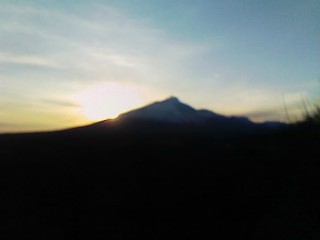 |
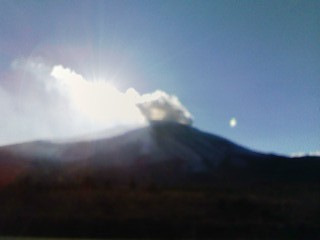 |
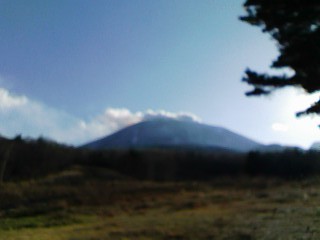 |
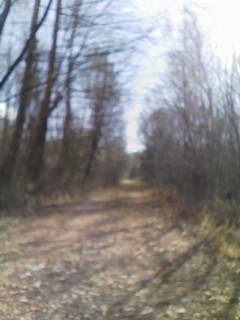 |
I observed 14 comets visually on Nov. 22 and 23 in Kita-karuizawa, Gunma, Japan.
Sometimes clouds came repeatedly, or sometimes thin clouds covered the sky. But I could have fine clear sky most time in both nights. Sometimes the sky overhead was very clear and the condition was excellent.
Saturn locates in the morning sky. Now the usual ring is not visible. Instead, a short needle spits Saturn. It looks very strange and artificial, like a symbol mark of Saturn in a book.
C/2006 OF2 ( Broughton )
Nov. 22 10.8 mag Dia. 1.9' DC 7 (40.0-cm reflector 75x)
Nov. 23 10.8 mag Dia. 2.1' DC 7 (40.0-cm reflector 75x)
Very bright, strongly condensed and easy to see.
C/2006 W3 ( Christensen )
Nov. 22 10.3 mag Dia. 3.3' DC 7 (40.0-cm reflector 75x)
Nov. 23 10.6 mag Dia. 4.9' DC 7 (40.0-cm reflector 36x)
Very bright and easy to see. The center looks very sharp. Faint coma extends widely towards north.
C/2007 U1 ( LINEAR )
Nov. 22 14.2 mag Dia. 0.4' DC 5 (40.0-cm reflector 257x)
Small, but still visible.
C/2007 W1 ( Boattini )
Nov. 22 fainter than 14.6 mag Dia. 0.7' (40.0-cm reflector 257x)
Finally, it became invisible.
C/2008 A1 ( McNaught )
Nov. 22 8.7 mag Dia. 7.5' DC 6-7 (40.0-cm reflector 36x)
Still bright and large, and easy to see. But it somewhat faded since early November.
C/2008 J1 ( Boattini )
Nov. 22 14.1 mag Dia. 0.9' DC 1 (40.0-cm reflector 257x)
It became very faint, but unexpectedly still visible.
C/2008 T2 ( Cardinal )
Nov. 23 fainter than 14.9 mag Dia. 0.3' (40.0-cm reflector 257x)
Not visible this time.
In the Nov. 22 evening, I caught an almost stellar object near the position. But I came back home and found it was a 15.5 mag star in the USNO-A2.0 catalog.
In the Nov. 23 evening, I could not find the comet due to the thin clouds.
In the Nov. 24 morning, I caught a stellar object near the position. I could not find any other cometary object around that. I came back home, and found the stellar object is a 14.9 mag star in the USNO-A2.0 catalog.
6P/d'Arrest
Nov. 22 10.3 mag Dia. 3.2' DC 2 (40.0-cm reflector 75x)
Nov. 23 10.6 mag Dia. 2.9' DC 0-1 (40.0-cm reflector 75x)
Bright and large still now. It is getting higher now, so its faint outer coma is getting visible more clearly and widely than before.
19P/Borrelly
Nov. 22 12.5 mag Dia. 1.6' DC 4-5 (40.0-cm reflector 144x)
Nov. 23 12.9 mag Dia. 1.1' DC 4 (40.0-cm reflector 144x)
It looks bright still now.
29P/Schwassmann-Wachmann 1
Nov. 22 11.5 mag Dia. 3.4' DC 0 (40.0-cm reflector 75x)
Nov. 23 11.0 mag Dia. 4.0' DC 1 (40.0-cm reflector 75x)
Surprisingly, the remnant of the major outburst in September is still visible. Extremely diffuse with no condensation.
The diffuse coma was visible more clearly and widely after the moon rise, because the comet became high and the sky became more clear. It seems severely influenced by the sky condition.
With higher magnification, the central part becomes visible clearly but the outer coma becomes hard to see. So estimation of the total magnitude can be fainter, around 12.5 mag or so.
No another new outburst was found with higher magnification.
On Nov. 23, it looks more clearly and widely than the previous night, probably due to the clear sky.
74P/Smirnova-Chernykh
Nov. 22 fainter than 14.4 mag Dia. 0.3' (40.0-cm reflector 257x)
I expect it can be visible visually in winter. But not visible still now.
116P/Wild 4
Nov. 22 fainter than 14.3 mag Dia. 0.4' (40.0-cm reflector 257x)
I thought it was visible on Nov. 1. But this time I could not see it with a very clear sky. So my observation on Nov. 1 can be a mistake.
144P/Kushida
Nov. 22 12.2 mag Dia. 1.5' DC 5 (40.0-cm reflector 144x)
Nov. 23 12.6 mag Dia. 1.3' DC 3 (40.0-cm reflector 144x)
Juan Jose Gonzalez reported it became unexpectedly bright, so I observed it. I was very surprised that the comet is very bright. Looks typical comatary. Not small.
205P/Giacobini
Nov. 22 12.6 mag Dia. 1.0' DC 3 (40.0-cm reflector 144x)
Nov. 23 13.5 mag Dia. 0.5' DC 3-4 (40.0-cm reflector 257x)
I had thought it could fade out very rapidly after the outburst. But actually, it keeps bright still now unexpectedly.
On Nov. 23, it seems that I estimated the central part only with higher magnification.
|
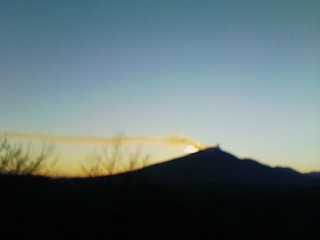 |
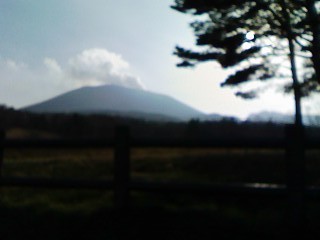 |
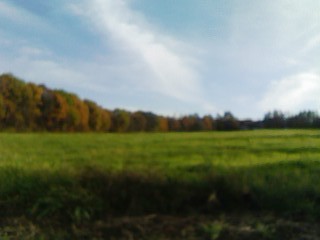 |
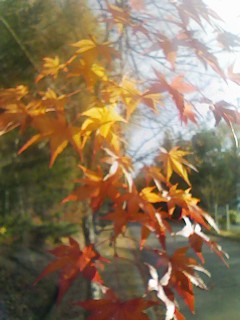 |
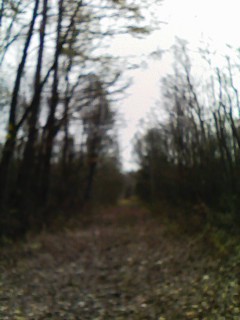 |
I observed 16 comets visually on Nov. 4 in Kita-karuizawa, Gunma, Japan.
Too many comets to observe!
Fine weather with no clouds in the afternoon. Excellent transparency, and I could see very distant mountains clearly. At the sunset time, Mt. Asama in front of the evening glow was an amazing view.
Fine weather with no clouds continued until midnight. Thin clouds came repeatedly after midnight, but the sky was very clear through the gap of clouds.
I could see many slow meteors of Taurids.
I also tried to observe 7P/Pons-Winnecke, but failed due to the bad seeing of the extremely low sky.
Completely cloudy on the next day.
C/2006 OF2 ( Broughton )
11.0 mag Dia. 2.4' DC 7 (40.0-cm reflector 75x)
Bright and very easy to see. The central condensation seems to have got stronger than before. Now the center looks sharp.
C/2006 W3 ( Christensen )
10.4 mag Dia. 3.4' DC 7 (40.0-cm reflector 75x)
Very bright and enjoyable view. Strongly condensed as before, and very easy to see.
The outer coma is getting visible more clearly, and more widely. The coma expands towards north.
C/2007 W1 ( Boattini )
13.8 mag Dia. 1.0' DC 2 (40.0-cm reflector 144x)
I had imagined that the comet would have became too faint to see. But unexpectedly, it is visible still now.
C/2008 A1 ( McNaught )
7.9 mag Dia. 7' DC 7 (40.0-cm reflector 36x)
Very bright. Strongly condensed and easy to see.
C/2008 J1 ( Boattini )
13.8 mag Dia. 1.0' DC 2 (40.0-cm reflector 144x)
Faint, but evidently visible.
It located very near by Polaris. Difficult to observe due to the strong light of Polaris. So I shifted the telescope and moved Polaris out of the field of view when estimating the brightness.
465P/Hill
about 14.5 mag Dia. smaller than 0.2' DC 7-8 (40.0-cm reflector 144x)
Tiny faint object similar to a background star looked just side of a 14-mag star. Near limit and hard to estimate the brightness.
P/2008 Q2 ( Ory )
14.2 mag Dia. 0.7' DC 4-5 (40.0-cm reflector 144x)
Unexpectedly, it seems bright. I had imagined that the comet would look almost stellar. But actually, it looks diffuse and cometary. Because it was diffuse, not so easy to see.
C/2008 T2 ( Cardinal )
about 14.0 mag Dia. 0.3' DC 5-6 (40.0-cm reflector 144x)
Very tiny but looks cometary. Hard to see.
6P/d'Arrest
9.9 mag Dia. 1.8' DC 3 (40.0-cm reflector 75x)
Bright and looks large still now. But not easy to see because it locates very low and the condensation is weak.
17P/Holmes
fainter than 13.6 mag Dia. 0.9' (40.0-cm reflector 144x)
Francois Kugel's image suggests it may be bright around 15-16 mag. So I tried to see it, but failed.
Because thin clouds came repeatedly, I could not confirm whether the remnant of the last year's huge coma was still visible or not.
19P/Borrelly
12.0 mag Dia. 2.1' DC 4-5 (40.0-cm reflector 75x)
Bright and clearly visible still now. It looks extending as shown by CCD images.
29P/Schwassmann-Wachmann 1
10.7 mag Dia. 4.2' DC 1-2 (40.0-cm reflector 75x)
Very very large! Round ghost like a planetary nebula, similar to the view of 17P/Holmes last year. The central condensation is weak, but very bright and clearly visible.
The size exceeds 4 arcmin now. It is largest 29P in my life.
61P/Shajn-Schaldach
13.9 mag Dia. 0.4' DC 6 (40.0-cm reflector 257x)
Tiny, but somewhat strongly condensed.
67P/Churyumov-Gerasimenko
13.9 mag Dia. 0.3' DC 7 (40.0-cm reflector 257x)
Very tiny and faint, like a defocussed background star.
116P/Wild 4
about 14.5 mag Dia. 0.4' DC 4-5 (40.0-cm reflector 144x)
It was faint as 17 mag in mid October by Ken-ichi Kadota's CCD observation, and LINEAR reported around 19 mag in late October. But the ephemeris says it should be brightening now. So I tried to observe it.
Unexpectedly, I think a very faint comet was visible. Few observations were reported recently, but maybe it is already brightening.
205P/Giacobini
13.2 mag Dia. 1.1' DC 3 (40.0-cm reflector 144x)
Unexpectedly, it is bright still now. But it became diffuse and hard to see.
|
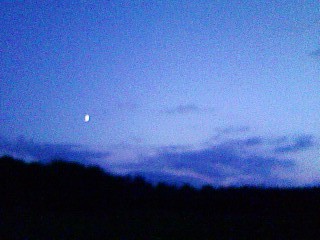 |
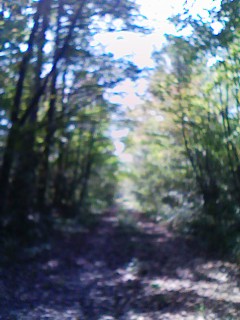 |
I observed 6 comets visually on Oct. 4 in Kita-karuizawa, Gunma, Japan.
Completely cloudy on Friday, but I could see stars all night on Saturday. Unfortunately, many clouds covered part of the sky, and fine areas were not so clear due to thin clouds.
C/2006 OF2 ( Broughton )
11.3 mag Dia. 1.5' DC 5-6 (40.0-cm reflector 144x)
Moderately condensed. Bright and easy to see.
C/2006 W3 ( Christensen )
10.8 mag Dia. 1.6' DC 6 (40.0-cm reflector 144x)
Strongly condensed. Bright and easy to see.
C/2007 W1 ( Boattini )
12.4 mag Dia. 1.5' DC 2-3 (40.0-cm reflector 144x)
Very faint and diffuse. Hard to see directly, but not hard to find the comet with averted vision.
C/2008 J1 ( Boattini )
12.1 mag Dia. 1.5' DC 3 (40.0-cm reflector 144x)
It became small, but still bright and visible visually. It looks diffuse, similar to in August and September.
29P/Schwassmann-Wachmann 1
10.4 mag Dia. 2.2' DC 2 (40.0-cm reflector 75x)
First observation since the major outburst on Sept. 21. I was surprised how bright it is! It is the first time to see such a bright and huge 29P in my history. Looks round, like a planetary nebula.
205P/Giacobini
12.6 mag Dia. 1.2' DC 3-4 (40.0-cm reflector 144x)
I could see finally Comet Giacobini re-discovered by Itagaki and Kaneda after the 112 years lost. More difficult to see than I have expected, maybe due to the poor sky condition. Somewhat condensed at the center, but expanding outer faint coma. So difficult to determine the DC value.
|
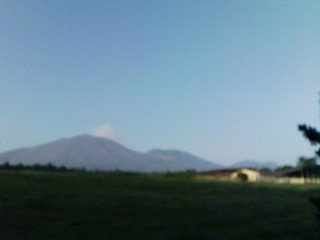 |
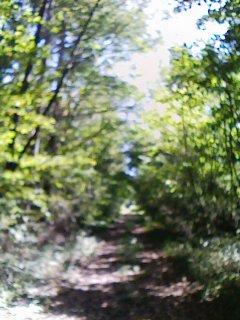 |
I observed 10 comets visually on Sept. 9 in Kita-karuizawa, Gunma, Japan.
I could have some clear fine days with no clouds after long rainy days. Mountains far away looked clearly. It was somewhat cold at night, so the autumn is coming.
Strongly influenced by a large moon in the evening. But after the moon set, I could have a very clear sky after midnight. Many bright comets are visible at midnight, so enjoyable! But it seems slightly dim in the morning east sky.
Jupiter looked amazing and excellent, two main belts are complex, and another two fainter belts seem visible.
I also tried to observe C/2005 L3, C/2007 N3, 7P and 199P, but not visible.
C/2006 OF2 ( Broughton )
11.4 mag Dia. 1.6' DC 6-7 (40.0-cm reflector 75x)
Already very bright, and easy to see. Looks more diffuse than C/2006 W3.
C/2006 W3 ( Christensen )
11.8 mag Dia. 1.8' DC 7 (40.0-cm reflector 75x)
Surprisingly bright, as already reported! Small, but extremely strongly condensed. So easy to see.
C/2007 U1 ( LINEAR )
14.5 mag Dia. 0.4' DC 5 (40.0-cm reflector 257x)
I could see it thanks to the clear sky. Tiny.
C/2007 W1 ( Boattini )
10.6 mag Dia. 4.4' DC 2 (40.0-cm reflector 75x)
Still bright, but already very diffuse. Slightly condensed at the center, but faint outer coma expands very large.
C/2008 J1 ( Boattini )
11.4 mag Dia. 2.0' DC 2-3 (40.0-cm reflector 75x)
Still bright and easy to see. It looks similar to that in August, probably due to the clear sky.
6P/d'Arrest
about 9.0 mag Dia. 2.6' DC 2-3 (40.0-cm reflector 75x)
It became very bright and large within last one month. However, it locates very near by large moon, so hard to see.
15P/Finlay
fainter than 13.1 mag Dia. 0.6' (40.0-cm reflector 257x)
It was 10-11 mag in August, however, it faded so much within last one month.
19P/Borrelly
11.3 mag Dia. 1.1' DC 3-4 (40.0-cm reflector 144x)
Not easy to see due to the dim sky in the morning.
29P/Schwassmann-Wachmann 1
fainter than 12.8 mag Dia. 0.6' (40.0-cm reflector 144x)
Not visible. Not in outburst.
51P/Harrington
fainter than 13.9 mag Dia. 0.5' (40.0-cm reflector 257x)
The sky was clear, but not visible.
|
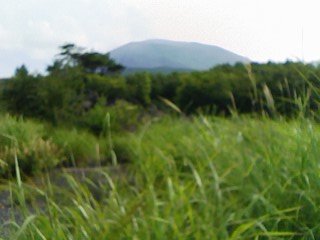 |
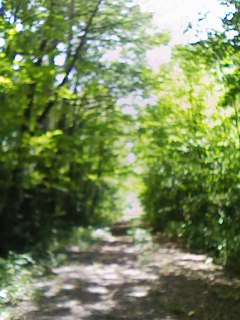 |
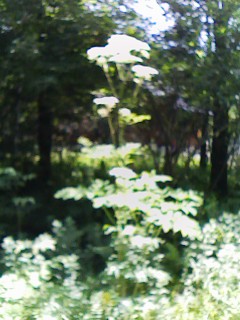 |
I observed 8 comets visually on Aug. 2 and 3 in Kita-karuizawa, Gunma, Japan.
The weather has been bad since spring here. This year we have many bright comets, but unfortunately I cannot observe them well. It took 3 months since my last observation, or about half a year since my last satisfied observation with many comets.
No rains, but very humid and somewhat foggy. Sometimes I could have some clear time and could see stars for a while, but the stars were hidden soon. But I could have a clear sky from evening until midnight on Aug. 3.
I also tried to see C/2007 G1, but failed due to the low sky clouds. The comet must be fainter than 10.5 mag.
I could see two bright meteors, possibly Perseid meteors, in the northern sky.
C/2005 L3 ( McNaught )
Aug. 3 13.3 mag Dia. 0.5' DC 4-5 (40.0-cm reflector 144x)
Now it looks a typical cometary object, although it was very sharp and similar to a star about half a year ago. Brighter than last year.
C/2006 OF2 ( Broughton )
Aug. 2 12.6 mag Dia. 0.7' DC 6-7 (40.0-cm reflector 144x)
Aug. 3 11.7 mag Dia. 0.9' DC 5-6 (40.0-cm reflector 144x)
Near by alpha Per and easy to find. Moderately condensed and easy to see. But slightly fainter than the ephemeris.
C/2006 W3 ( Christensen )
Aug. 3 12.7 mag Dia. 1.1' DC 6 (40.0-cm reflector 144x)
I was surprised that now it is very bright and large, although it was only around 14-15 mag about half a year ago. Now easy to see.
C/2007 N3 ( Lulin )
Aug. 2 about 12.2 mag Dia. 1.0' DC 6 (40.0-cm reflector 144x)
Aug. 3 12.4 mag Dia. 0.9' DC 6-7 (40.0-cm reflector 144x)
Near by Jupiter and easy to find. It looks tiny, and not so bright as I have expected. On Aug. 2, influenced by the low sky clouds.
C/2007 W1 ( Boattini )
Aug. 3 7.9 mag Dia. 7.5' DC 3 (40.0-cm reflector 36x)
Diffuse, but bright and easy to see.
C/2008 J1 ( Boattini )
Aug. 2 10.7 mag Dia. 3.0' DC 3-4 (40.0-cm reflector 75x)
Aug. 3 10.2 mag Dia. 3.1' DC 3-4 (40.0-cm reflector 75x)
Diffuse, but bright and large. Easy to see.
6P/d'Arrest
Aug. 2 12.1 mag Dia. 1.1' DC 3 (40.0-cm reflector 144x)
Aug. 3 11.7 mag Dia. 1.6' DC 2-3 (40.0-cm reflector 144x)
I was surprised that it is already bright and large. Diffuse, but already easy to see. It loosk very large with a clear sky.
15P/Finlay
Aug. 3 about 10.8 mag Dia. 1.5' DC 4 (40.0-cm reflector 144x)
Tough to see due to the low sky condition. Unexpectedly, the comet is still bright.
|
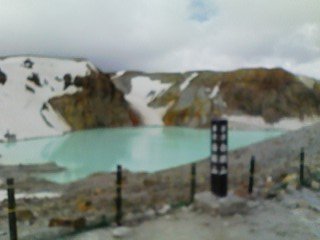 |
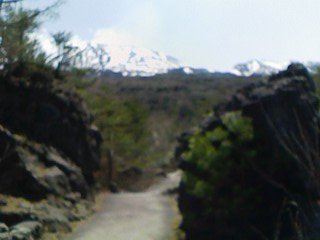 |
 |
I observed 2 comets visually on May 3 in Kita-karuizawa, Gunma, Japan.
The weather at night kept bad during the holidays. I could observe comets only for about 30 minutes in the evening on May 3, but the sky was very hazy.
On May 3, the sky was covered with clouds soon, and it kept cloudy all through the night. On May 4, it was very fine at daytime, however, clouds came during the evening glow and covered the whole sky before night.
C/2006 Q1 ( McNaught )
10.8 mag Dia. 1.2' DC 4 (40.0-cm reflector 144x)
Through thin clouds, so not easy to see.
C/2007 W1 ( Boattini )
7.8 mag Dia. 9' DC 3 (40.0-cm reflector 36x)
Very large! I guess it would have been larger and the estimation would have been brighter with a clear sky.
|
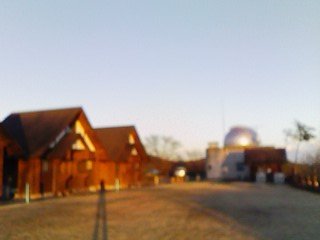 |
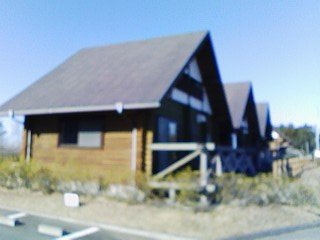 |
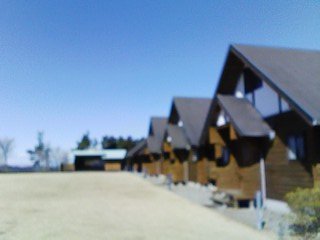 |
I observed 14 comets and 1 asteroid visually on Mar. 5 in Mt. Hanadate, Ibaraki, Japan.
The weather forecast said that it would be getting fine. But the sky was covered with many clouds when I left home. A little snow felt on the way to Mt. Hanadate. But it became completely fine with no clouds when I arrived at Mt. Hanadate.
The weather had been fine with no clouds all night. Very dry, and the telescopes did not get wet at all. But the sky condition was not so excellent considering the visibility of the Milky Way. Especially, the evening low sky was bad, so I could not observe C/2008 A1 and 192P. But the condition was good to see planets. Saturn through a 40-cm telescope was a very fine view.
I also tried to observe 26P/Grigg-Skjellerup. I could see something very diffuse at 13 mag around the predicted position. But I looked up the ASAS-3 web site after I came back home, and found it was a cluster of three 14-mag stars.
C/2005 L3 ( McNaught )
13.9 mag Dia. 0.6' DC 7 (40.0-cm reflector 257x)
Very strongly condensed.
C/2006 Q1 ( McNaught )
11.4 mag Dia. 0.9' DC 4 (40.0-cm reflector 144x)
It located at the similar position when I observed it last time in December before it moved away to the southern sky. Extremely low, but I could see it.
C/2006 S5 ( Hill )
14.4 mag Dia. 0.5' DC 5 (40.0-cm reflector 257x)
It became much fainter than January.
C/2006 W3 ( Christensen )
14.7 mag Dia. 0.3' DC 4 (40.0-cm reflector 257x)
Locating near by a star. Very faint near limit. So very difficult to see.
C/2007 B2 ( Skiff )
14.4 mag Dia. 0.6' DC 5 (40.0-cm reflector 257x)
Very small and faint.
C/2007 G1 ( LINEAR )
fainter than 13.9 mag Dia. 0.3' (40.0-cm reflector 257x)
Not visible. It seems to have located on the dark nebula, and only a few stars exist around the area. So it was difficult to fix my eyes to the correct position.
C/2007 T1 ( McNaught )
10.7 mag Dia. 1.9' DC 4 (40.0-cm reflector 75x)
Very low, but clearly visible. But it was somewhat fainter than I have expected.
C/2007 W1 ( Boattini )
13.8 mag Dia. 0.6' DC 4-5 (40.0-cm reflector 257x)
Already bright and easy to see.
C/2008 C1 ( Chen-Gao )
10.3 mag Dia. 3.5' DC 3 (40.0-cm reflector 36x)
Bright. But unexpectedly, it is a large nebulous comet with a very weak condensation.
17P/Holmes
4.7 mag Dia. 80' DC 1 (5-cm refractor 10x)
I observed it after two months blank. Now it is hardly visible with naked eyes, only a hint of nebulous object was detectable. However, it is still very bright through a 5-cm refractor, the large nebulous diffuse comet is clearly visible.
29P/Schwassmann-Wachmann 1
13.3 mag Dia. 1.3' DC 1-2 (40.0-cm reflector 144x)
Two months after the outburst in January. But unexpectedly, the diffuse nebulous comet with no condensation is still bright and visible visually.
46P/Wirtanen
9.3 mag Dia. 6.5' DC 6 (40.0-cm reflector 36x)
Very bright and large. Strongly condensed and easy to see.
93P/Lovas 1
13.5 mag Dia. 1.0' DC 5 (40.0-cm reflector 144x)
Nobody had been observed it visually for last two months. But unexpectedly, it is still bright. I was surprised because it is still easily visible.
110P/Hartley 3
fainter than 14.2 mag Dia. 0.4' (40.0-cm reflector 257x)
Not visible.
2005 WY3
14.3 mag DC 9 (40.0-cm reflector 257x)
Peculiar asteroid which passed the perihelion in January. It was much fainter than I have expected because locating in the low sky. So it is uncertain if the object is completely stellar.
|
|
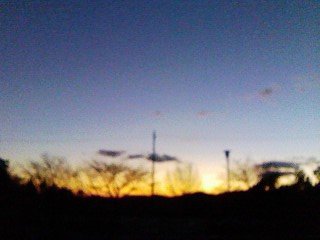 |
I observed 11 comets visually on Jan. 4 in Mt. Hanadate, Ibaraki, Japan. I also report observations of 8P and 17P on Jan. 3 in Fujishiro, Toride City, Ibaraki, Japan.
The weather was fine with no clouds until I ended my observations (but it became cloudy when I came back home). The sky was not so excellent at first, but it became better during my observations. I enjoyed two naked eye comets, 8P/Tuttle and 17P/Holmes, with unaided eyes.
C/2006 S5 ( Hill )
Jan. 4 13.4 mag Dia. 0.6' DC 4 (40.0-cm reflector 144x)
Near by a star, but visible bright.
C/2006 W3 ( Christensen )
Jan. 4 15.2 mag Dia. 0.3' DC 3-4 (40.0-cm reflector 257x)
Near by a star. It looked small.
P/2007 H1 ( McNaught )
Jan. 4 fainter than 13.7 mag Dia. 0.5' (40.0-cm reflector 257x)
It became too faint to see now.
8P/Tuttle
Jan. 3 5.4 mag Dia. 24' DC 3-4 (10x70 monocular)
Jan. 4 5.7 mag Dia. 20' DC 6 (10x70 monocular)
Diffuse in the city light pollution. However, strongly condensed in the mountain location, and visible with naked eyes.
17P/Holmes
Jan. 3 4.0 mag Dia. 75' DC 1 (5-cm refractor 10x)
Jan. 4 3.3 mag Dia. 100' DC D1 (naked eye)
Jan. 4 3.6 mag Dia. 85' DC 2 (5-cm refractor 10x)
Very bright in the mountain location! Easy object with naked eyes, and extraordinary large. Evidently brighter than 4 mag stars, so the comet is still around 3.5 mag!
In the city on Jan. 3, the comet looked faint due to the light pollution, which caused my estimation fainter.
29P/Schwassmann-Wachmann 1
Jan. 4 12.8 mag Dia. 1.0' DC 6 (40.0-cm reflector 144x)
Large, moderately condensed, and easy to see. I enjoyed the bright cometary 29P after a long time interval.
46P/Wirtanen
Jan. 4 9.6 mag Dia. 6' DC 5 (40.0-cm reflector 36x)
Surprisingly bright and large! It extends large, but the central condensation is strong well and easy to see.
50P/Arend
Jan. 4 14.6 mag Dia. 0.4' DC 6 (40.0-cm reflector 257x)
Unexpectedly, the small, strongly condensed object was still visible.
93P/Lovas 1
Jan. 4 13.3 mag Dia. 0.8' DC 4-5 (40.0-cm reflector 144x)
Still bright and easy to see.
110P/Hartley 3
Jan. 4 14.5 mag Dia. 0.5' DC 6 (40.0-cm reflector 257x)
Strongly condensed.
192P/Shoemaker-Levy 1
Jan. 4 13.4 mag Dia. 0.6' DC 4 (40.0-cm reflector 144x)
Unexpectedly bright and visible visually.
|
|
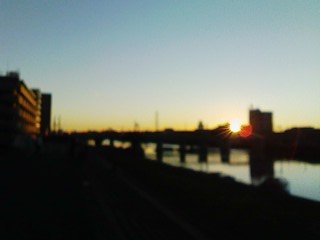 |
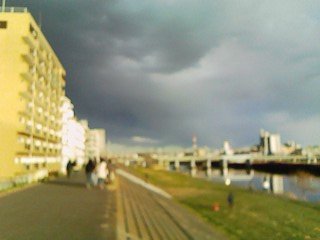 |
A happy new year! Here are my first observations in 2008.
I observed 8P/Tuttle and 17P/Holmes on Jan. 1 beside Tsurumi River in Yokohama City, Kanagawa, Japan.
It was fine with no clouds at dawn, and I enjoyed the very beautifull first sunrise in 2008. However, heavy clouds covered the sky in the afternoon. The weather became fine at night, but small clouds still remained and passed over the sky frequently. But the sky was clear and the comets were visible better than last night.
8P/Tuttle
5.6 mag Dia. 19' DC 4 (10x66 monocular 10x)
17P/Holmes
3.7 mag Dia. 52' DC 2 (10x66 monocular 10x)
![]()
|
Go to Seiichi Yoshida's Diary of Comet Observations in 2007. |
![]()